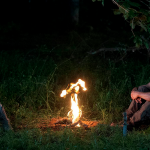After Project Runway bolted to Lifetime in 2009, Top Chef became Bravo’s signature reality competition series. As such, the network has sought to capitalize on the show’s popularity by creating various spinoffs, such as the sweet-tooth confection Top Chef: Just Desserts or the recent Life After Top Chef. Arguably the noblest entry in this cavalcade of successors, however, is Top Chef: Masters, which follows a format similar to the original show but features contestants who are already well-established and respected chefs.
I have always enjoyed Top Chef: Masters, perhaps even more than Top Chef itself. Of course, with such successful and prominent restauranteurs as contestants, egos can lead to some tensions. Nonetheless, the episodes over the past five years tend to be marked by a greater sense of professionalism than one often finds in the up-and-coming competitors in Top Chef, who feel they have more to prove and are thus often more fiercely aggressive. This aggression results in countless interpersonal conflicts of the type that Bravo execs doubtless love, fodder for the network’s Andy Cohen on Watch What Happens Live after each episode. Personally, however, I prefer the camaraderie that often develops among the master chefs in each battle. Their reputations are already secure, and there is no direct financial reward (prize winnings go to the contestants’ selected charities); in general, they are competing for personal honor and love of their craft.
All of which makes this new season’s wrinkle — each chef is required to bring one sous-chef to assist in the competition — additionally fascinating. In some sense, the inclusion of the sous-chefs resembles season 11 of Project Runway, in which every episode featured a team challenge of some sort. But in Project Runway, the team format was clearly a calculated move on the producers’ part to cultivate discord rather than unity. In competitive reality TV series, team challenges are almost synonymous with backbiting and personal vitriol, leading to awkward judging sessions where former teammates throw one another under the bus. On this season of Top Chef: Masters, however, the dynamic is entirely different. After all, the teams are not arbitrarily assigned by networks, hosts, or judges; they are extensions of existing working groups. It remains to be seen whether the stress of competition will put undue strain on the relationships between the master chefs and their understudies. There have already been some small gripes from competitors whose sous-chefs have placed them in bad situations.
Even so, I find this latest innovation to be largely positive. America is a nation that tends toward individualism, and our reality competitions frequently underscore this. But most successful restaurants rely on a community of workers: owners, chefs, waitstaff, even dishwashers. Similarly, most great artists and artisans are seldom lone wolves in real life: they learn either through a supportive but critical network of peers (e.g., the Inklings) or through a period of apprenticeship (as Shakespeare learned the theater business) — or, frequently, through both.
In Top Chef: Masters‘ 5th season, then, the success of the chefs is not based solely on their individual performances; it also derives from the extent to which they have been good mentors and teachers. It presents chefs as artists who care enough to pass down their craft to a new generation, and in turn, the sous-chefs have the opportunity to compete on a much grander scale than might otherwise be available to them. It reveals the value and necessity of mentoring, and that good art and craftsmanship flourish best as a communal effort.











